Let’s Play “Un-Fuck This Startup”
TL;DR: We overcomplicated our new product. So, we paused, cut some things out, and found focus. (You can do the same.)
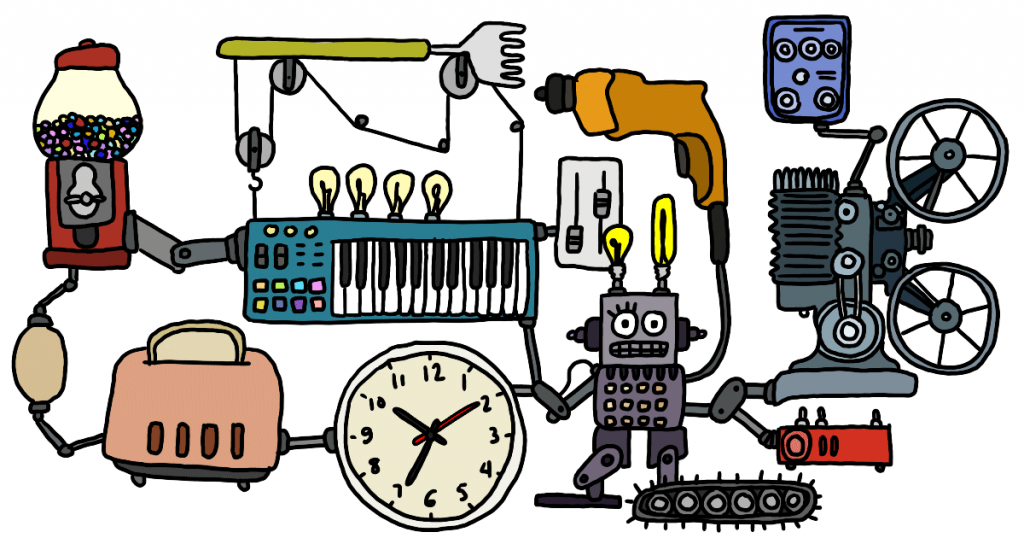
Let me tell you how a new product slips out of control. We started Emetti because of Cypress Mountain. On one trip up there, I found myself pushing stuck cars back on the road. As I did, I wondered, “shouldn’t Cypress’ management notify customers about these conditions?”
I returned home, and called Shelkie to discuss a product: A simple SMS notifications tool for ski resorts. They could use it to send text messages about road hazards, fresh snow, or special offers. The plan was simple, and we got to work.
Soon, we had a working prototype. But, we needed a way to deal with longer messages. So, we built a newsfeed to accommodate those. We also realized that some might prefer email notifications over text messages. So, we built that in. Then, we added the ability for two-way communications. (Because their customers might have questions, right?) Now, we had a chat product, too. Why stop there? Soon, we added in a helpdesk to simplify support.
To summarize: our SMS notifications product turned into a suite of customer communications tools. It had 4 parts: A notifications tool; Inbound chat; A website newsfeed; And, a helpdesk solution. See the problem, here?
Feed my Frankenstein
When I look back on those decisions, each addition made sense. That said, every one added an order of complexity we weren’t equipped for. As Shelkie once asked me, “So, we’re building a mix of Intercom, WordPress, Buffer, Zendesk, and Facebook. Do you want to add anything else?” Worse yet, we started to compare each of these products to the market leaders’ offerings.
This happens easily—because it’s easier to complicate things than simplify them. Worse yet, each new addition introduces more questions. At one manic point in this process, I envisioned a total of 14 products we’d build into the system. If you make things, this sort of delusional fantasy might sound familiar.
We got pretty far on this, but, progress slowed. I’d spend hours on our pricing plan, unable to make it work (we had to factor in agents, views, SMS fees, Twilio, and more). Shelkie slugged through CAN-SPAM and SMS compliance issues. (None to mention a hundred-and-one other things.)
Could we launch it? Sure, but it’d be deficient on many levels. Meanwhile, my parents started to make fun of how our planned launch was in “two weeks”… no matter when they asked. Oh right… and I no longer knew who our customer was. This is bad: if your customer is “anyone”, it’s actually no one.
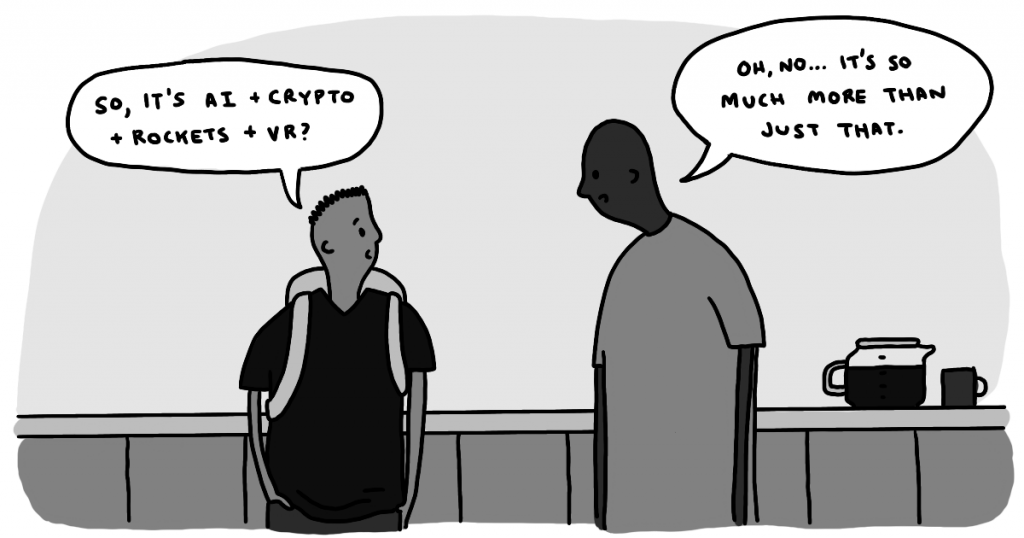
Some lessons are hard to learn
When you go off course, you often find yourself looking in on your own life, as though you’re a spectator. Eric and I kept asking one another: “I thought this time would be different. How did we screw this up, again?”
The weird part is that we should have learned this lesson with Campnab1. It taught us how successful a product can be, when you stay focused. Regardless, sometimes you see your mistakes—but think you’re too far down one path to correct course.
Last week, we had to face reality: our momentum was shot. At the rate we were going, we’d never launch this product. If we did, we’d struggle to market it—because we no longer knew who it was for.2
We invented scenarios and added features with abandon. Prospective customers’ informed these, but that’s not real feedback. Worse yet, we planned to go head-to-head with bigger, and indisputably better, products. (I tried this before, and do not recommend this approach.)
The KonMari Method… for your bloated product
Over coffee, last Thursday, we unfucked our startup. In truth, this started a bit earlier, but the real change happened over 10 minutes. Our plan was simple. First, we’d put aside our inbound chat and helpdesk products. Second, we’d simplify notifications to browser only (for the time being). Then, we’d put all our effort into the most interesting product: a newsfeed in your website.
We didn’t like putting aside so many nearly-complete products. That said, we are only two guys. Plus, we don’t need to launch all these tools at once—or at all. There are many players in the notifications space. Helpdesk software is ubiquitous. Meanwhile, chat is now a feature more than a standalone product.
Finally, we got serious about who might actually use this. Or, better yet, who wouldn’t. I bet Best Buy’s management won’t install a $99/month product built by two guys—nor will any other Fortune 500. Yet, small startups could use something like this. (Hat-tip to Rob Walling for suggesting this segment.)
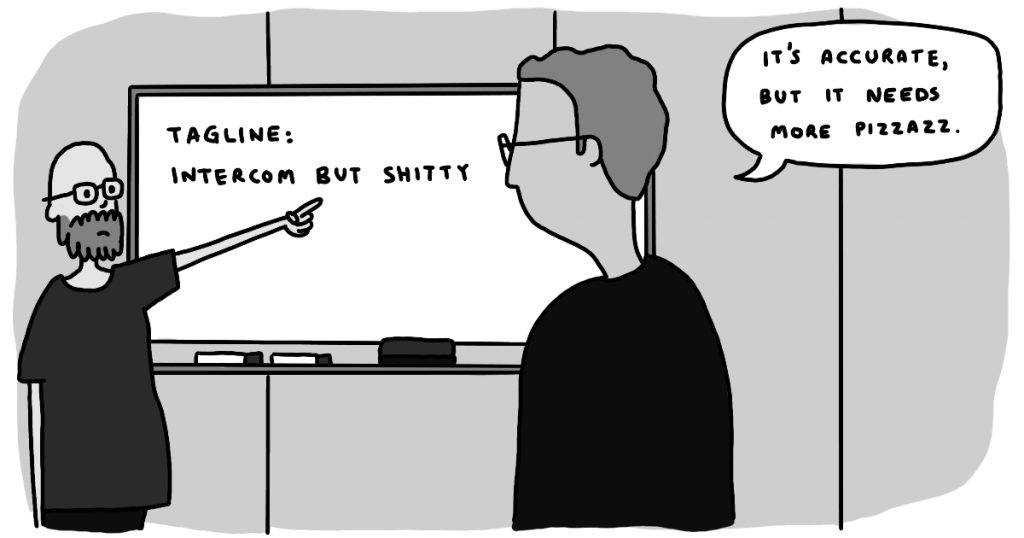
Simplify, simplify, simplify
Last fall, I spent a week playing with illustrations for our marketing website. Turns out, that was a poor use of time. Our first tests of the Emetti Newsfeed page only confused people. So, out went the illustration, and in came a screen shot of the product. Next was the headline. I don’t even remember what it first was, but it seemed simple enough. Again, it confused people. So, we tossed that, and stated what we are building: a newsfeed.
This is the joyful aspect of de-frankensteining your product. You realize that “A better way to communicate, engage, and support customers” doesn’t mean much to most visitors. (And it’s terrible for SEO.) That said, phrases like “a newsfeed for your website” or “changelog as a service” are pretty clear. In fact, some even search for such terms—which makes them SEO-friendly.
From there, I moved to simplifying the website. (Sometimes the fastest way to complete tasks is to not do them.) With our new focus, approximately 60 pages3 turned into 7. The week of website copywriting I had been dreading compressed into 1 hour. (I gave myself a little extra time to remove the barfy marketing-speak I had let sneak into the website copy.)
Oh, yeah, and our pricing model? Those get a lot simpler when you aren’t juggling multiple cost-factors. We took a moment to re-examine, made some tweaks, and left it at that. For now, it serves as a starting point. In fact, I don’t think it matters that much. We’ll get it right once we’re operational.
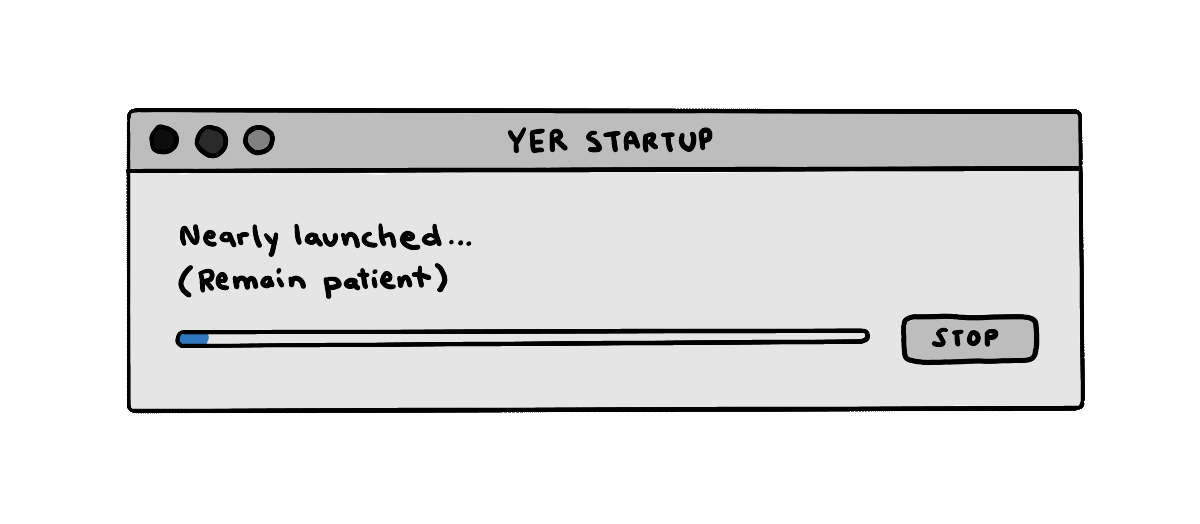
Not all wasted
You could read the above, and think me an idiot. (You wouldn’t be the first—and your assessment might be accurate.) That said, sometimes you have to muddle around to make sense of what you’re doing. Put another way: We wouldn’t have thought of building a newsfeed as a service, at the outset. It was the lack of space in our SMS notifications that led us to this notion. (Personally, I find the newsfeed idea more interesting than SMS notifications.)
In spite of getting carried away, our initial thinking was viable. It stands to reason that most don’t want a separate chat widget, newsfeed, and help menu on their website. Consolidating those into one panel makes sense. Plus, our add-on tools don’t need to outperform bigger competitors.
Those who need Intercom’s robust feature set will buy that product. Some won’t need that depth, though. In fact, I bet that a lot of startups only use a fraction of what Intercom offers. Those companies might try out Emetti for our newsfeed. In time they might find our (basic) chat and helpdesk functionality to be all they actually need.
So, it’s not as though we’re throwing away our past work. We’re just putting it aside (maybe forever). For now, we’re concentrating on releasing the one tool that’s unique. The big upside? We dropped a lot of dead weight—and can move at a speed that feels right.
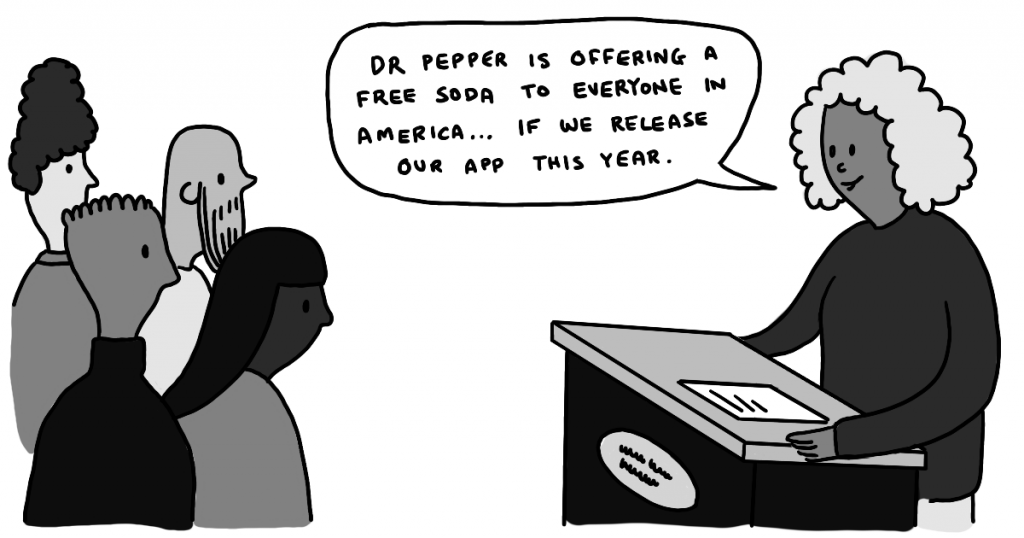
What—me have no shame?
Why do I share this screw-up? Mostly because we so commonly treat product development as though it follows a straight path. There are countless startup advisors who opine on how to avoid a blunder like the one I describe. What few acknowledge is the difficulty in seeing matters for what they are, when you’re so close up.
If anyone should know this, by now, it’s me. After decades of building things, you’d think I would have recognized that we were going awry—and corrected course immediately. Instead, we spent months adding layer upon layer of complexity. Yep, even in my mid-40s, I’m not immune to these mistakes. Odds are, I never will be.
That said, I don’t want to beat myself up over these mistakes—and neither should you. But, if you find yourself in the weeds, don’t let sunk cost (literal or figurative) stop you from making the tough decisions your startup requires.
Update (February 24, 2020): Since releasing this product, we’ve continued to work on the features we first envisioned. Recently we released the chat component, and have the other elements in the works. You can get a sense for the long term vision here.
—
Homework
Stuck in endless pre-launch? Take pause. Look at your product, and identify the one thing that promises unique value to an identifiable audience. Then, put aside everything other than that one thing, and launch it. When you do, you can use the amount of screaming you hear to inform which features you build next.
- Campnab is a dead-simple product that Shelkie came up with. I (stupidly) thought it was a dumb idea. We didn’t overcomplicate that product. Instead, we launched it in about a month. Within a day of release, it received national news coverage. It currently accounts for ~25% of our annual revenue.
- If you ever find yourself in this same spot, hit the brakes. Take a time-out, and figure out who’s going to buy it, and how you’ll reach them. That information is just as important as your idea and execution.
- It should have never been that big. However, if you fall into trying to look like your bigger competitors, this happens. (Curiously, I commonly warn my clients to avoid doing this.)
I’m @karj and the above is just my opinion. Looking for more? Here’s a full list of articles and information on my books. This is what I’m doing now, and what I don’t do. I’d love it if you tried Emetti on your website!